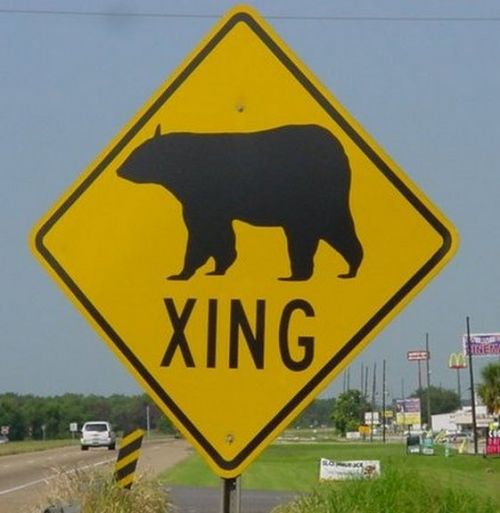
Suspect charged in Lockport triple murder
January 29, 2013OUR VIEW: As technology grows, so do threats around it
January 29, 2013For many outdoor enthusiasts, nothing beats a night or two of camping in a tent, and Louisiana’s mild winters provide the perfect temperatures for doing just that.
But mild winters also mean the state’s bear population doesn’t really hibernate, leading one Tri-parish park to ban tent camping for an undetermined time.
“Tent camping has been suspended at the park since late August due to sightings,” said Kemper Williams Park check-in clerk Meaghan Foley. “We see them in the park, but not too often.”
The park has taken other precautions, too, including installing bear-proof trashcans, to ensure the safety of those visiting the area.
Another Kemper Williams Park worker said that travelers had also reported seeing bears in intersections near the park, and motorists along U.S. Highway 90 are duly warned of the potential to spot bears in traffic – a sign just east of the road to Kemper Williams Park warns of a bear crossing.
Sometimes the sign is not enough, especially when the bears take to the roadways after dark and blend in with the shadows of night. Just last November, a young female black bear was struck in the early morning hours less than two miles from the sign.
In addition to the sometimes-balmy Louisiana winters making bears active, the large mammals are also searching high and low for their seasonal diet – mast like acorns and pecans – and the geography of St. Mary Parish plays a part in where the bears can find such foodstuffs.
“The ridges in St. Mary Parish have some of the highest concentrations of mast producing trees,” said Louisiana Department of Wildlife and Fisheries black bear program manager Maria Davidson. “High ground is where the bears are, and high ground is where the people are. Lots of people have live oaks on their property, and these trees are their main food source during the winter season.”
The department recently completed several years of data collection across the state in hopes of having enough information to have the black beer, which can range in size from 180 pounds for a small female and 550 pounds for a large male, removed form the federal threatened species list.
“I don’t think there has been a significant increase or decrease in the St. Mary Parish black bear population,” Davidson said. “There are about 120 bears in the parish, and coastal bears like these are hard pressed to find food sometimes. They are hemmed in by the coast and people, and there is a small amount of habitat for the animals. There is lots of interface with coastal bears because of their proximity.”
According to Davidson, there are several precautions outdoor enthusiasts can take to prevent an encounter with a black bear.
“There is no food they won’t eat,” Davidson said. “They will go after garbage, pet food, greasy barbecue pits and even bird feeders. A bear will follow its nose until it finds food.”
When camping, Davidson suggested storing food in bear-proof boxes and ice chests and make sure all food is put away when not in use,
“Just think and use common sense when food is involved,” she said. “Don’t just put it in the tent. Pay attention to the details. Should you come to face to face with a bear, stand your ground, talk calmly and raise your hands above your head to appear taller. If there are others with you, stand side by side and raise your arms. We also urge hunters in the parish to carry bear spray.”
According the Davidson, there have never been any bear attacks in the Tri-parish area, and one of the most recent reported brushes with one of the large mammals occurred last year at Atchafalaya Delta Wildlife Management Area.
“A hunter in a deer stand had a mother bear and a young cub near his stand,” said LDWF biologist and Atchafalaya Delta WMA field supervisor David Leblanc. “He said the mother growled and eventually left the area.”
The chance encounter happened in a very remote part of the WMA, and bear sightings have never been reported in the WMA’s campground area.
“After the incident, we posted signs in the camping area and boat launch that a bear had been spotted and to take precautions, like carrying bear spray,” Leblanc said.
Besides Kemper Williams and the Atchafalaya Delta WMA, only one other park in St. Mary Parish offers a hearth for those looking to pitch a tent for the night and, in the park’s 30-plus years of business, not one bear has been spotted in the park.
“We’ve never had a bear in the park, but we do get the occasional alligator on the beach,” said Lake End Park manger Dwayne Barbier, laughing. “The park is fenced in, so it’s not a problem here.”
Motorists along U.S. Highway 90 near Patterson are greeted with a sign that warns of the potential to spot bears in traffic. Bear sightings in the area have become frequent enough to suspend camping at Kemper Williams Park.









